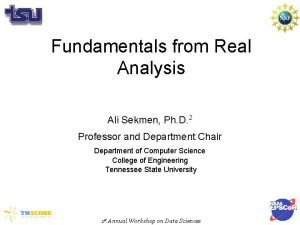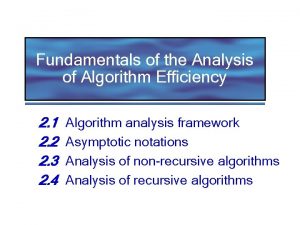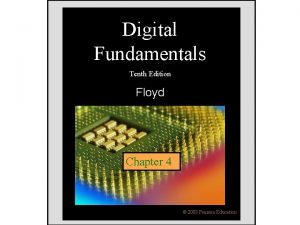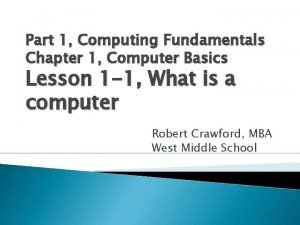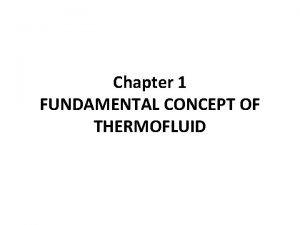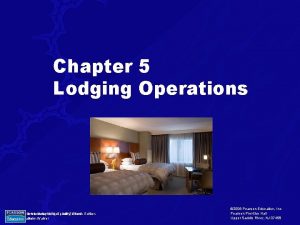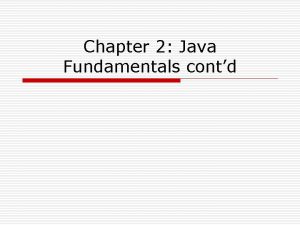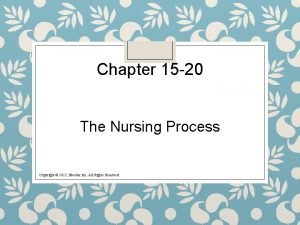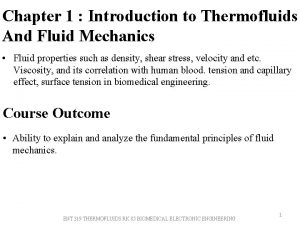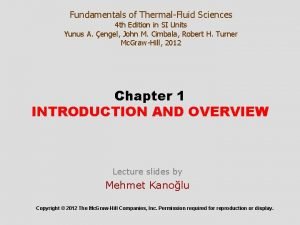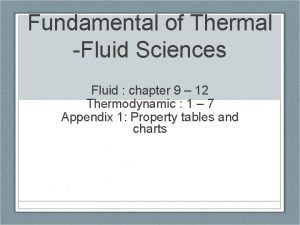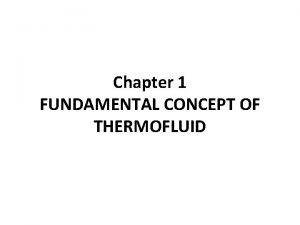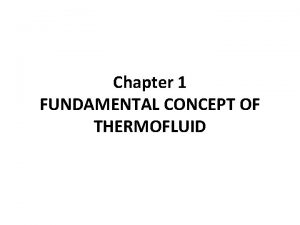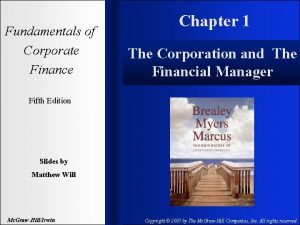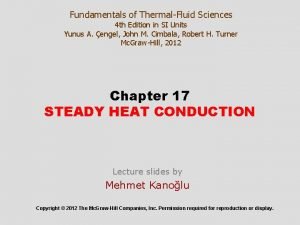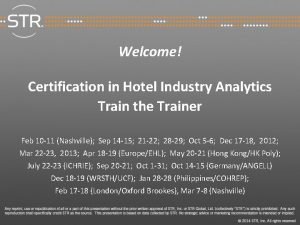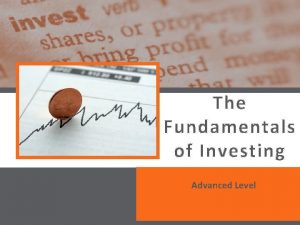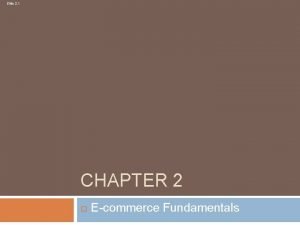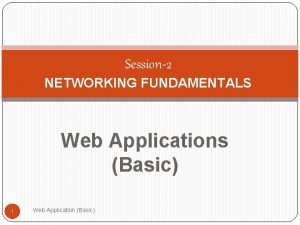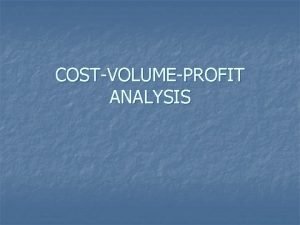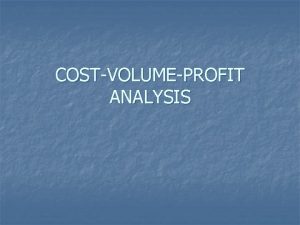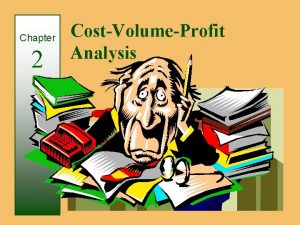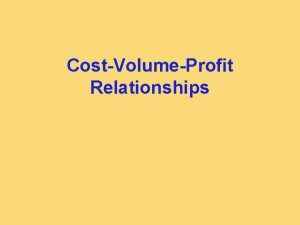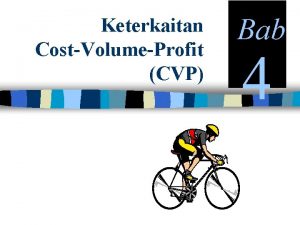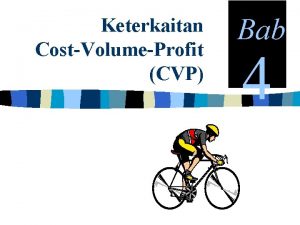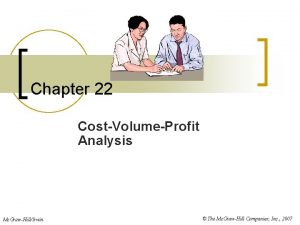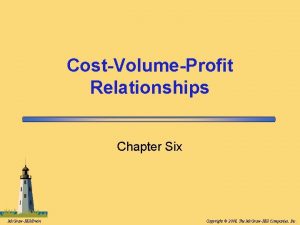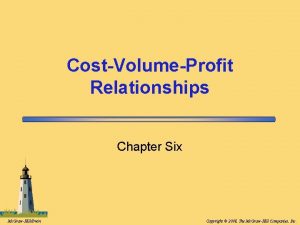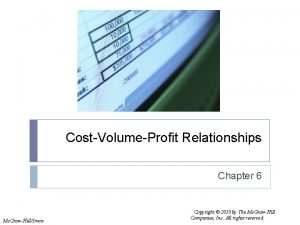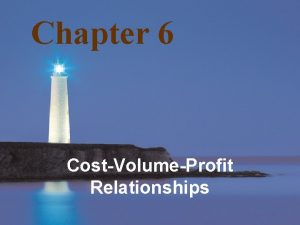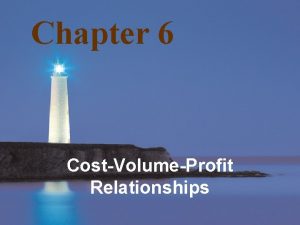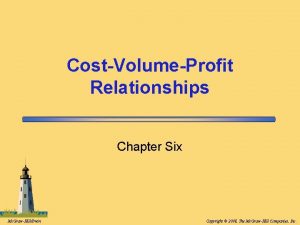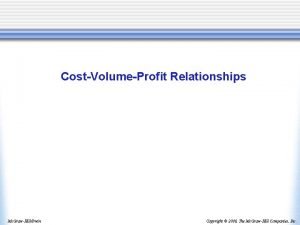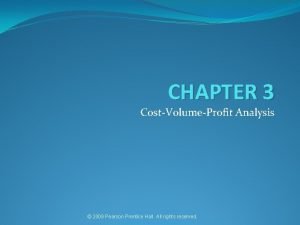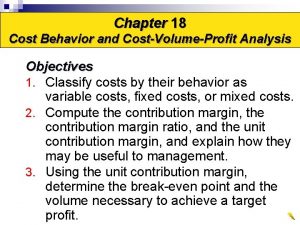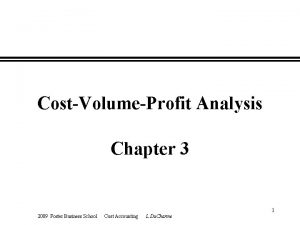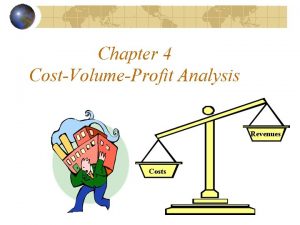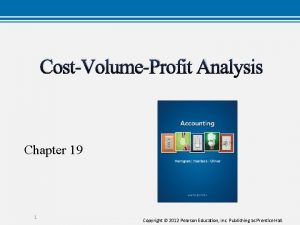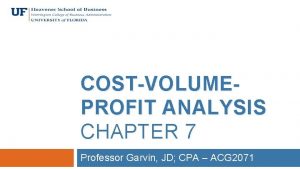Fundamentals of CostVolumeProfit Analysis Chapter 3 Mc GrawHillIrwin








































- Slides: 40

Fundamentals of Cost-Volume-Profit Analysis Chapter 3 Mc. Graw-Hill/Irwin Copyright © 2008 The Mc. Graw-Hill Companies, Inc. All rights reserved.

Learning Objectives: 1. Use cost-volume-profit (CVP) analysis to analyze decisions. 2. Understand the effect of cost structure on decisions. 3. Use Microsoft Excel to perform CVP analysis. 4. Incorporate taxes, multiple products, and alternative cost structures into the CVP analysis. 5. Understand the assumptions and limitations of CVP analysis. 3 -2

Cost-Volume-Profit Analysis LO 1 Use cost-volume-profit (CVP) analysis to analyze decisions. What is CVP? COST VOLUME PROFIT # CVP studies the relationship between revenue, cost, and volume and their effect on profits. 3 -3

The Profit Equation The Income Statement Operating Profit equals Total Revenue less Total Costs! Total Revenue - Total Costs = Operating Profit The Income Statement written horizontally: Operating Profit p = Total Revenue - Total Cost = TR TC 3 -4

Profit Equation, Continued… Total Revenue (TR) = Price (P) x Units of output produced and sold (X) TR = PX Total Cost (TC) = [Variable Costs per unit (V) x Units of Output (X)] + Fixed Cost (F) TC = VX + F 3 -5

Profit Equation, Continued… p = TR - TC p = PX - VX + F p = P - V X - F 3 -6

U-Develop: An Example U-Develop Income Statement For the Month Ending March 200 X Per Unit Total Sales $ 7, 200 $ 0. 60 3, 600 0. 30 720 . 06 Contribution Margin 2, 880 0. 24 Less: Fixed Costs 1, 500 Less: Variable Cost of Goods Sold Less: Variable Selling Costs Operating Profit $ 1, 380 Developed 12, 000 prints in March 3 -7

3 -8

3 -9

Contribution Margin: AKA: “CM” The difference between price and variable cost. It is what is leftover to cover fixed costs and then add to operating profit. Contribution Margin Per Unit: Price Per Unit - Variable Cost Per Unit = CM Per Unit Punit - Vunit = CMunit 3 -10

Contribution Margin (Total) Total Contribution Margin: (Price x Quantity) - (Variable Cost x Quantity = Total CM P - V X = Total CM or PX - VX 3 -11

Example: U-Develop CM Using the data from U-Develop Sold 12, 000 units Per Unit Total Sales $ 7, 200 $ 0. 60 3, 600 0. 30 720 . 06 Contribution Margin 2, 880 0. 24 Less: Fixed Costs 1, 500 Less: Variable Cost of Goods Sold Less: Variable Selling Costs Operating Profit 1. What is CM per unit? $ 1, 380 $0. 60 – $0. 36 = $0. 24 2. What is total CM? ($0. 60 - $0. 36)(12, 000) = $2, 880 3 -12

Contribution Margin, cont… Contribution Margin, why do I care? U-Develop: Cmunit = $0. 24 For every $1. 00 in sales, U-Develop has $0. 24 available to cover fixed costs. Once fixed costs are covered, $0. 24 for each dollar sales will increase profits! 3 -13

Contribution Margin Ratio: Contribution margin as a percentage of sales revenue. Total Contribution Margin Ratio: Total contribution margin as a percent of total sales revenue. It describes how much the contribution margin is for each dollar in sales. CM Per Sales Dollar Unit Contribution Margin Ratio: Contribution margin per unit as a percentage of sales price per unit. This calculates the contribution margin provided for each dollar of revenue. CM Per Sales Dollar P - V X P - V P 3 -14

Example: Contribution Margin Ratio (CMR) U-Develop P CMR V X $. 60 P X CMR . 60 $2, 880 $. 36 12, 000 . 40 $7, 200 CMR unit $. 24 . 40 $. 60 3 -15

Break-Even Break-even: The point at which profits equal zero. At break -even, all fixed costs are covered, but the firm is not producing any operating profit. Equations: TR – TC = π TR = TC + π TR = PX and TC = VX + F) PX = VX + F + π PX – VX = F + π Break-even is where π = 0 X(P-V) = F + π Break-Even = F + π X P -V = F X P -V 3 -16

Break-Even, continued… Since, sales – variable cost = contribution margin, then: Break-Even = Fixed Costs Contribution Margin Unit Contribution Margin: If unit CM is used, then the calculation provides the number of units necessary to break-even. Contribution Margin Ratio: If unit CM Ratio is used, then the calculation provides the sales dollars necessary to break-even. 3 -17

Example: Break-Even in Units X p F CM unit X $1, 500 $0 $. 24 X 6, 250 prints 3 -18

Example: Break-Even in Sales Dollars The total sales dollars at which profits equal zero. Break-even: Total revenues = Total costs TR F $0 p = $0 CMR TR $1500. 40 = $3, 750 6, 250 prints X $. 60 = $3, 750 3 -19

Target Volume in Units Target Profit = Target Volume = (units) X = P - V X - F Fixed Cost + Target Profit Unit Contribution Margin F + p P - V 3 -20

Example: Target Volume in Units U-Develop Formula: Target Profit = $ 1, 800 = F + p CMunit X = $ 1, 500 + $ 1, 800 $ 0. 24 X = 13, 750 units 3 -21

Target Volume in Sales Dollars Target volume sales dollars = TR T R = Fixed costs + Target profit Contribution margin ratio F + p CMR 3 -22

Example: Target Volume in Sales Dollars U-Develop: Given: Target p = $1, 800 T R T R $1, 500 = F + p CMR $1, 800 . 40 $8, 250 13, 750 x $. 60 = $8, 250 3 -23

CVP Summary: Break-Even Break-even volume (units) Break-even volume (sales dollars) = = Fixed costs Unit contribution margin Fixed costs Contribution margin ratio 3 -24

CVP Summary: Target Volume Target volume (units) Target volume sales dollars = = Fixed costs + Target profit Unit contribution margin Fixed costs + Target profit Contribution margin ratio 3 -25

Graphic Presentation: U-Develop Break-Even ue l ota n ve re T $3, 750 st o al c Tot 6, 250 prints 3 -26

CVP and the Effects of Different Cost Structures LO 2 Understand the effect of cost structure on decisions. Cost Structure: The proportion of fixed and variable costs to total costs. Operating Leverage: The extent to which the cost structure is comprised of fixed cost. Operating Leverage = Contribution Margin Fixed Costs The higher the organization’s operating leverage, the higher the break-even point. 3 -27

Comparison of Cost Structures Lo-Level Company High-Level Company (1, 000, 000 units) Amount Sales Percentage Amount Percentage $1, 000, 000 100% Variable Cost $750, 000 75% $250, 00 25% Contribution Margin $250, 000 25% $750, 000 75% $50, 000 5% $550, 000 55% $200, 000 20% Fixed Costs Operating Profit Break-Even 200, 000 units 733, 334 units CM per Unit $0. 25 $0. 75 Degree of Operating Leverage 1. 25 3. 75 3 -28

Example: Operating Leverage Why do I care? Suppose Low Level & High. Level both increase sales 10% or $100, 000 Low-Level High-Level C Sales $100, 000 CMR . 25 . 75 $25, 000 $75, 000 Prior NI $200, 000 NI with Sales increase of 10% $225, 000 $275, 000 Increase in Profit 3 -29

Operating Leverage, Continued. . . Low-Level High-Level Percent Increase in sales 10% Degree of Operating Leverage 1. 25 1. 75 12. 5% 17. 5% $200, 000 12. 5% 17. 5% $225, 000 $235, 000 Percent increase in NI Prior NI Percent increase in NI NI with sales increase of 10% 3 -30

Margin of Safety The excess of projected or actual sales volume over break-even volume. or The excess of projected or actual sales revenue over break-even revenue. Suppose U-Develop sells 8, 000 prints 8, 000 6, 250 1, 750 prints $4, 800 $3, 750 $1, 050 1750 x $. 60 = $1, 050 3 -31

Using Spreadsheets for CVP Analysis LO 3 Using Microsoft Excel to perform CVP analysis. Using Excel, combined with an analysis tool such as Goal Seek, CVP analysis is simplified. Steps: 1. In the “Set cell” edit field, enter the cell address for the target profit calculation. 2. In the “To value” edit field, enter the target profit. 3. In the “By changing cell” edit field, enter the cell address of the volume variable. 4. Click “OK” and the program will find the break-even volume. 3 -32

Extending CVP: Taxes LO 4 Incorporate taxes, multiple products, and alternative cost structures into the CVP analysis. What if U-Develop is in the 25% tax bracket and wants profit after taxes of $1, 800? Target Volume X $1, 500 ptarget F 1 -t CM unit $1, 800 $. 24 . 75 = 16, 250 3 -33

CVP and Taxes, Continued. . . To Prove it Works: Sales 16, 250 $. 60 $9, 750 VC 16, 250 $. 36 5, 850 CM $3, 900 FC 1, 500 NIBT Taxes Net Income $2, 400 25% 600 $1, 800 3 -34

Extending CV P: Multiple Products What if: U-Develop does prints and enlargements? Prints Enlargements Selling price $. 60 $1. 00 Variable cost . 36 . 56 $. 24 $. 44 Contribution margin Total Fixed Costs $1, 820 3 -35

Example: Product Mix U-Develop’s product mix: For every 9 prints sold UDevelop sells 1 enlargement. Weighted Average Contribution Margin 9/10 $. 24 1/10 $. 26 9/10 6, 300 prints Breakeven $1, 820 $. 44 7, 000 1/10 700 enlargements 3 -36

Alternative Cost Structures Given: Fixed costs of $1, 500 are sufficient for monthly volumes less than or equal to 5, 000 prints. For every additional 5, 000 prints U-Develop must rent a machine for $480 per month. Remember, original break-even was 6, 250 units. (CM x X) – FC = π ($0. 24 x 6, 250) – ($1, 500 + $480) = ($480) Recalculate break-even using new fixed cost containing the rental of the additional machine. Break-even Units = Fnew CMunits = $1, 500 +$480 $0. 24 = 8, 250 3 -37

Assumptions and Limitations of CVP LO 5 Understand the assumptions and limitations of CVP analysis. Assumptions & Limitations: 1. Although the CVP model is a very strong tool, the output is dependent upon the assumptions made by cost analyst. These assumptions include which costs are fixed vs. variable. 2. With the aid of software programs, many of the limitations have been eliminated. Complicated cost structures are easily incorporated in CVP analysis when software tools are used. 3 -38

Problem 1 The Power Tool Division of ABC Hardware sells one product, Jig Saw, and has the following data for the second quarter: Units of output: 1, 200 units Price per unit: $150 Variable cost per unit: 90 Total fixed costs: 48, 000 Required: • Determine Quarterly operating profit when 1, 200 units are sold. • Break-even volume in units and sales dollars. • Contribution margin ratio. • Sales dollars and units needed to generate an operating profit of $57, 000. • Number of units sold that would produce an operating profit of 15% of sales dollars. 3 -39

Problem 2 (cont. from problem 1) The Power Tool Division of ABC Hardware introduces a second product, Circular Saw, whose unit price and unit variable cost are $200 and $120, respectively. The total fixed cost is increased to $68, 000. The manager of ABC Hardware estimates that Jig Saws and Circular Saws will sell in a 3: 2 ratio. Required: Calculate the break-even volume in units using fixed product mix method, and weighted-average contribution margin method. 3 -40
 Ali sekmen
Ali sekmen Mathematical analysis of non-recursive algorithms
Mathematical analysis of non-recursive algorithms Nursing chapter 1
Nursing chapter 1 Fundamentals of electric circuits chapter 4 solutions
Fundamentals of electric circuits chapter 4 solutions Fundamentals of corporate finance chapter 6 solutions
Fundamentals of corporate finance chapter 6 solutions Digital fundamentals chapter 4
Digital fundamentals chapter 4 Chapter 24 magnetism magnetic fundamentals answers
Chapter 24 magnetism magnetic fundamentals answers Tire wheel and wheel bearing fundamentals
Tire wheel and wheel bearing fundamentals Goodheart willcox chapter 1 answers
Goodheart willcox chapter 1 answers Fundamentals of electric circuits chapter 9 solutions
Fundamentals of electric circuits chapter 9 solutions Fundamentals of electric circuits chapter 7 solutions
Fundamentals of electric circuits chapter 7 solutions Building the right foundations/fundamentals
Building the right foundations/fundamentals Computer fundamentals chapter 1
Computer fundamentals chapter 1 Fundamentals of corporate finance chapter 1
Fundamentals of corporate finance chapter 1 Fundamentals of thermal-fluidsciences chapter 1 problem 25p
Fundamentals of thermal-fluidsciences chapter 1 problem 25p Principles of information systems
Principles of information systems Fundamentals of information system
Fundamentals of information system Chapter 17 fundamentals of nursing
Chapter 17 fundamentals of nursing Chapter 6 fingerprints
Chapter 6 fingerprints Lodging operation
Lodging operation Chapter 2 lab java fundamentals
Chapter 2 lab java fundamentals Fundamentals of nursing chapter 15 critical thinking
Fundamentals of nursing chapter 15 critical thinking Fundamentals of thermal-fluidsciences chapter 1 problem 9p
Fundamentals of thermal-fluidsciences chapter 1 problem 9p Chapter 39 electrical fundamentals
Chapter 39 electrical fundamentals Fundamentals of thermal-fluidsciences chapter 2 problem 19p
Fundamentals of thermal-fluidsciences chapter 2 problem 19p Fundamentals of thermal-fluidsciences chapter 2 problem 1p
Fundamentals of thermal-fluidsciences chapter 2 problem 1p Kataoka-yahiro and saylor's model
Kataoka-yahiro and saylor's model Chapter 1 understanding your health and wellness
Chapter 1 understanding your health and wellness Fundamentals of thermal-fluidsciences chapter 1 problem 19p
Fundamentals of thermal-fluidsciences chapter 1 problem 19p Fundamentals of thermal-fluidsciences chapter 1 problem 16p
Fundamentals of thermal-fluidsciences chapter 1 problem 16p Fundamentals of nursing chapter 16
Fundamentals of nursing chapter 16 Grashoff number
Grashoff number Fundamentals of corporate finance, chapter 1
Fundamentals of corporate finance, chapter 1 Fundamentals of thermal-fluidsciences chapter 2 problem 30p
Fundamentals of thermal-fluidsciences chapter 2 problem 30p Fundamentals of thermal-fluidsciences chapter 2 problem 30p
Fundamentals of thermal-fluidsciences chapter 2 problem 30p Chapter 23 computer system fundamentals
Chapter 23 computer system fundamentals Certification in hotel industry analytics
Certification in hotel industry analytics Water treatment fundamentals
Water treatment fundamentals Fundamentals of investment notes
Fundamentals of investment notes E business fundamentals
E business fundamentals Basic networking fundamentals
Basic networking fundamentals
